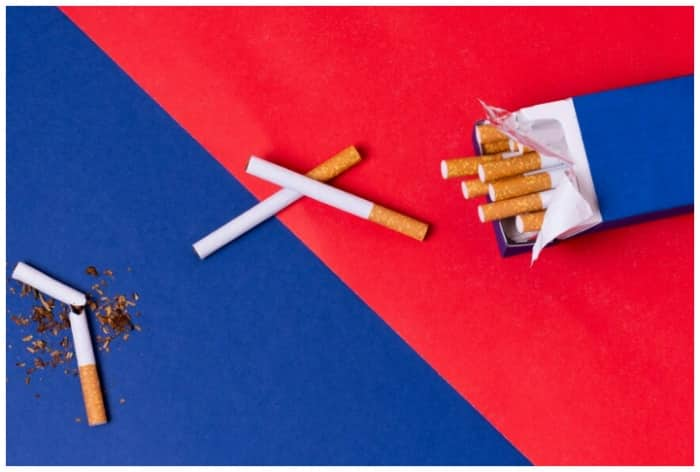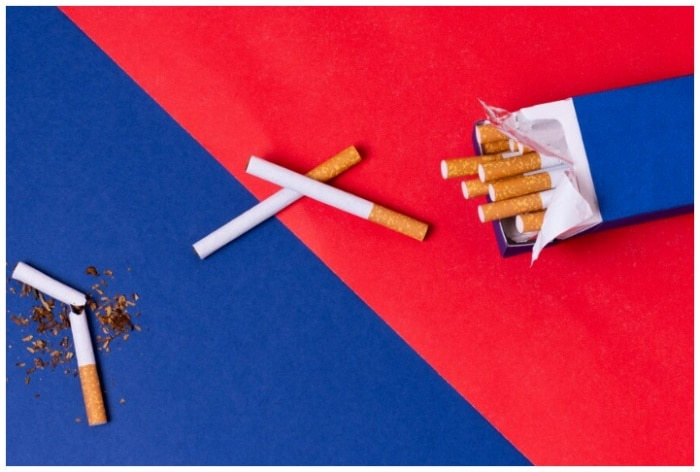Second hand smoking or passive smoking is dangerous in itself. Expert reveals how it may take a toll on your body.

Smoking is a fatal activity that may lead to lung cancer and other deadly diseases as well. But if you so not smoke but are around people or a crowd where people are smoking, this may cause potential health risks too. Tobacco consumption remains a major global health concern, contributing to 229.8 million disability-adjusted life years and 8.7 million deaths in 2019 alone. It not only directly affects smokers but also poses considerable risks to those who do not actively engage in smoking.
What is second smoking? Second-hand smoke (SHS), also known as passive smoke, is the involuntary inhalation of smoke from burning tobacco products by nonsmokers. India.com got in touch with Dr.Prasad S. Adusumilli, MD, FACS, Thoracic Surgeon & Cellular Therapist, Memorial Sloan Kettering Cancer Center who elaborated on how passive smoking is dangerous. Despite efforts to reduce smoking rates globally, around 37% of the world’s population is still exposed to second-hand smoke, with women and children disproportionately affected. Even nonsmokers may test positive for nicotine, carbon monoxide, and formaldehyde in bodily fluids due to exposure, with prolonged exposure heightening the risk of inhaling these toxins.
5 Health Risks of Second Hand Smoking
- Cancer Risk: The World Health Organization (WHO) identifies over 7,000 chemicals in tobacco smoke, with at least 69 known carcinogens and over 250 other harmful substances. .
- Childhood Cancer: Children exposed to second-hand smoke may face an increased risk of developing certain cancers, including lymphoma, leukaemia, and brain tumours. The exposure during pregnancy could potentially contribute to these risks.
- Respiratory Issues:Second-hand smoke can lead to chronic lung problems such as Chronic Obstructive Pulmonary Disease (COPD) and asthma in adults. Children are particularly vulnerable, experiencing frequent coughing, sneezing, shortness of breath, and more severe asthma attacks.
- Cardiovascular Disease: Exposure to second-hand smoke significantly increases the risk of high blood pressure, arteriosclerosis, heart attacks, and strokes. Regular exposure raises the likelihood of developing heart disease by up to 30% .Pregnant women exposed to second-hand smoke are at a heightened risk of delivering infants with low birth weights, which can have long-term health implications.
- Infections and Chronic Conditions in Children: Children and infants exposed to second-hand smoke are more prone to frequent ear infections, respiratory infections like bronchitis and pneumonia, and other chronic conditions. They also have a higher risk of SIDS (sudden infant death syndrome).
Second-hand Smoke in Various Settings
Second-hand smoke (SHS) poses significant health risks across various environments, particularly affecting vulnerable populations like children. In homes and apartments, SHS can infiltrate through vents and cracks, causing respiratory illnesses such as bronchitis, pneumonia, ear infections, and sudden infant death syndrome (SIDS).
Public spaces, including parks, beaches, and outdoor dining areas, are not immune to SHS dangers, as non-smokers can inhale harmful chemicals even in open-air settings. Additionally, confined spaces like cars and public transportation vehicles exacerbate SHS risks, exposing passengers, including children and non-smoking adults, to toxic chemicals lingering in the air and on surfaces.
WHO estimates that 1.2 million premature deaths worldwide are linked to second-hand smoke annually, impacting both adults and children. The only way to mitigate these risks is by avoiding tobacco smoke completely. Implementing smoke-free policies and advocating for smoke-free environments can minimize exposure to second-hand smoke, promoting healthier communities.

